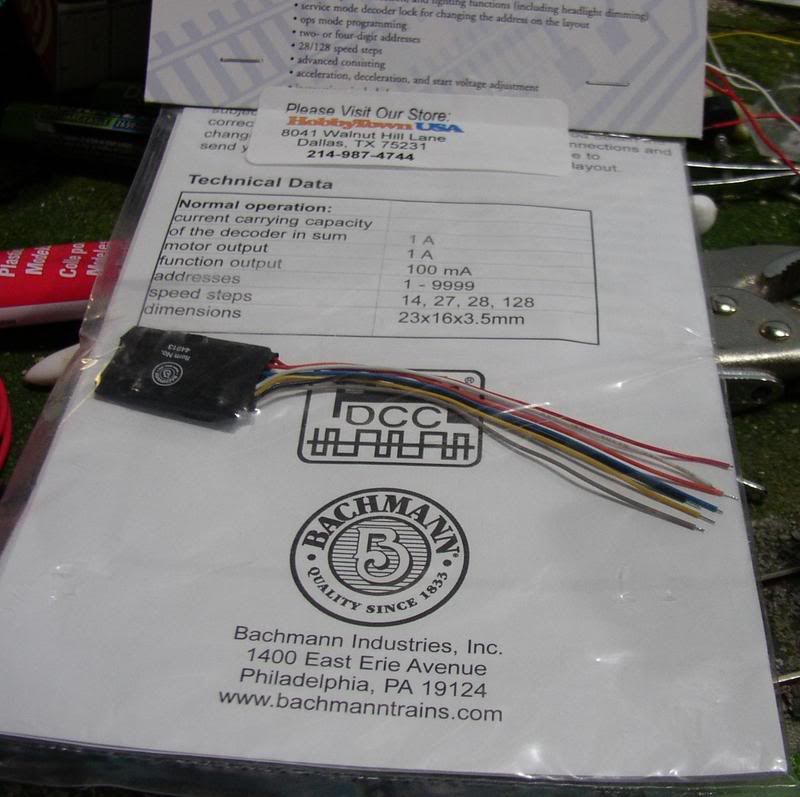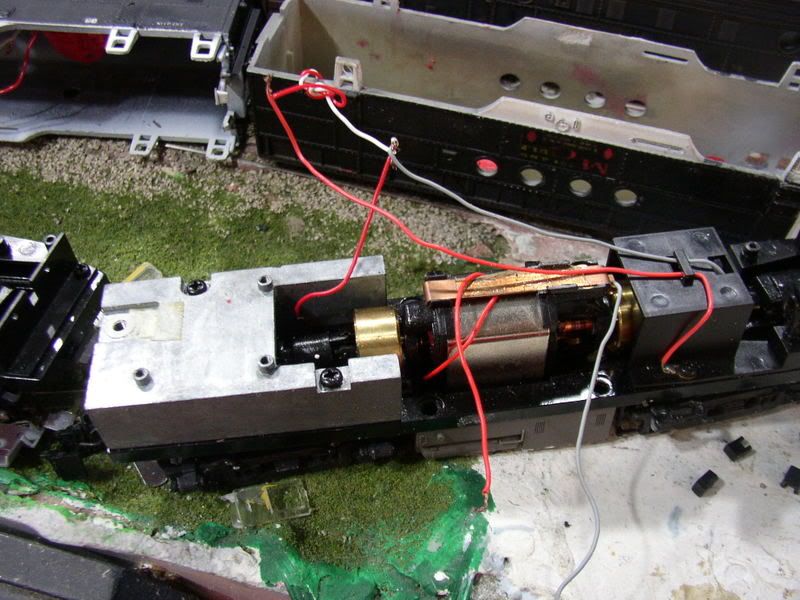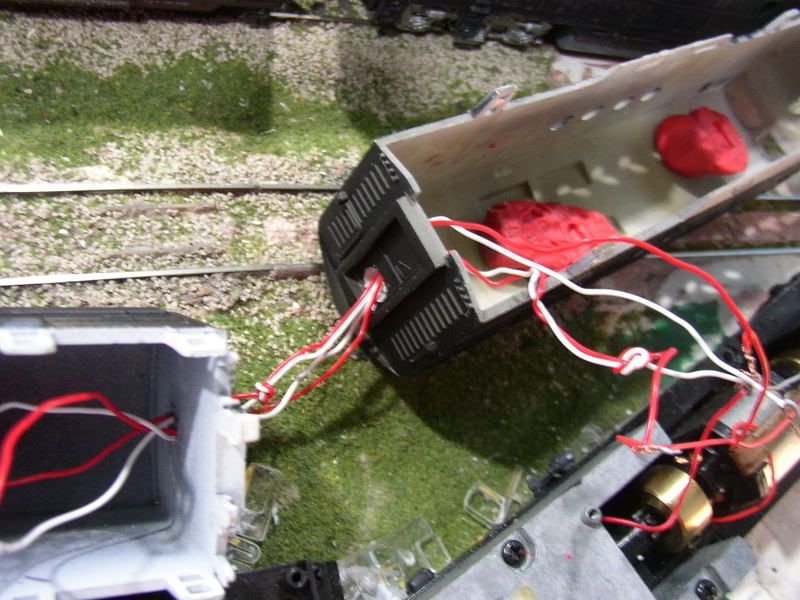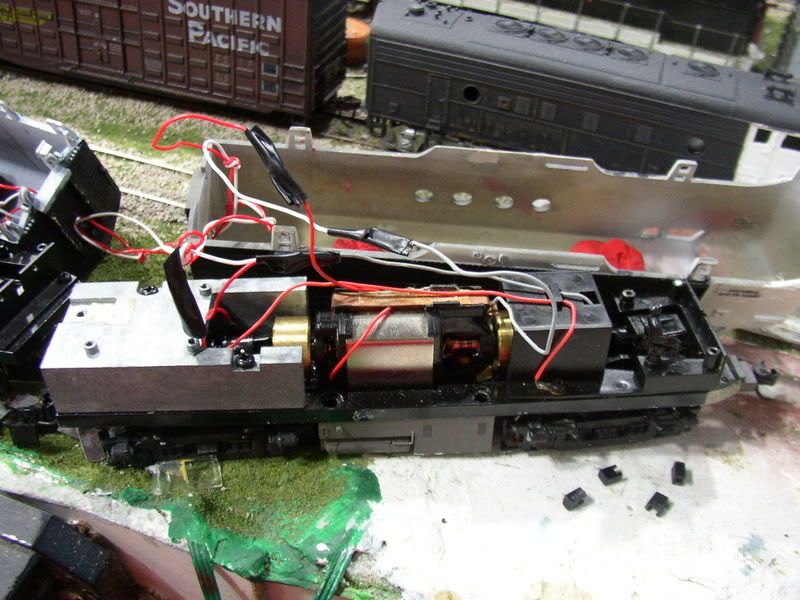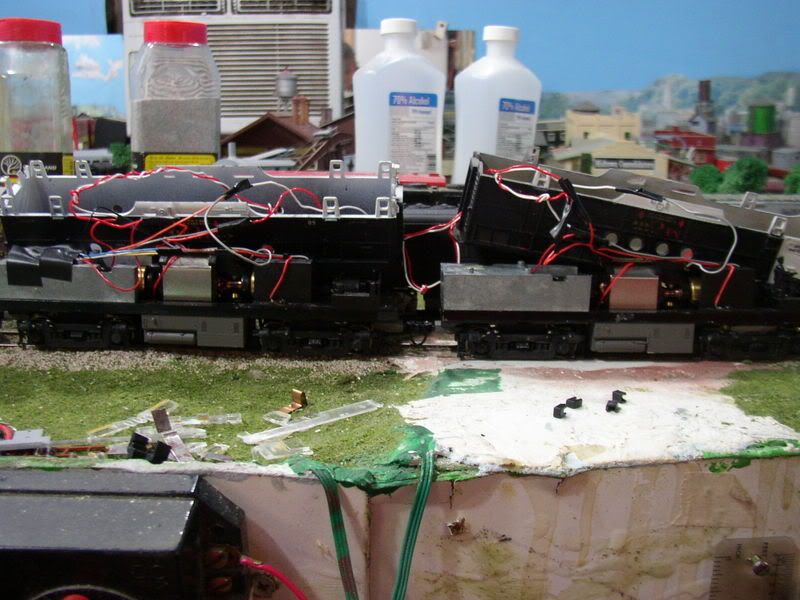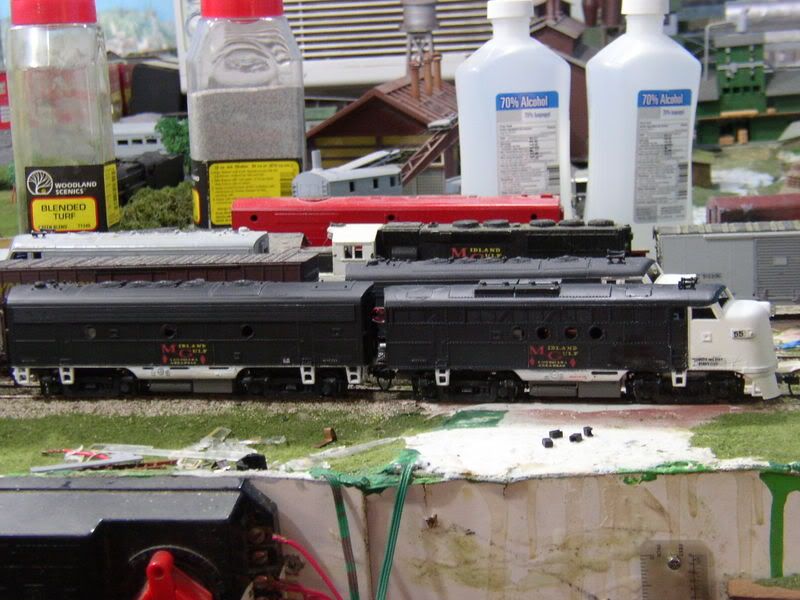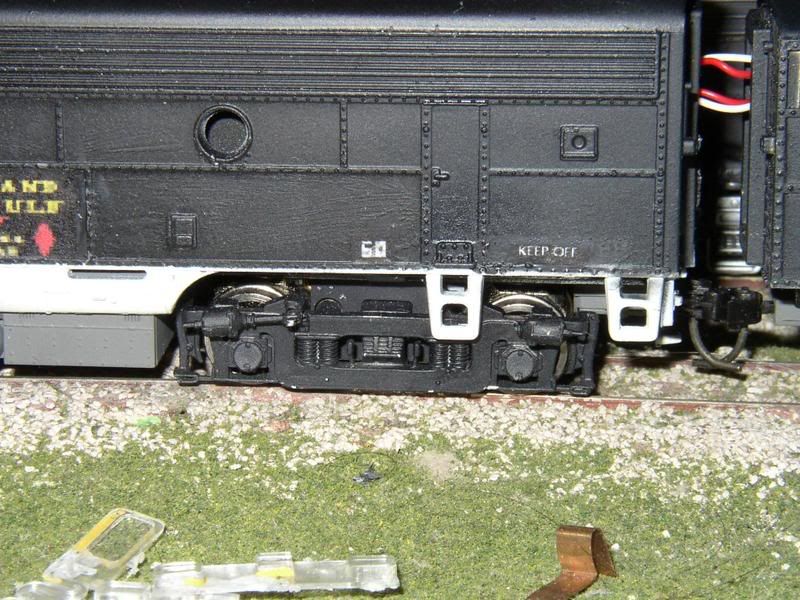I've completed this weeks project. That was to install one decoder to run two locomotives. Here's an account (with photos) of how it was done.
First, the item on which this is all centered. The decoder to be used.
This is a standard Bachmann two function decoder. There's nothing special about it. Current capacity: 1 amp. Motor output: 1 amp. Function output: 100 mA.
--------------------------------------------------------------------------------------
Next are the chassis to be used. Twin Proto 2000 FA chassis. Since they're both identical we'll focus on one. Here the pickup wires have been linked with their identical twins on the other chassis. Now I know somebody out there is going to notice that a red pickup wire is connected to a gray pickup wire. The answer to that is simple. Life-Like used a red wire for the right rail pickup (hot frame). Now here's where it gets interesting. Life-Like, in it's infinite wisdom, used a red wire on the rear truck for left rail pickup and a gray wire on the front truck for left rail pickup.
--------------------------------------------------------------------------------------
Next, the wires for motor control have been added. Since the decoder will not be powering the headlight (that will be installed later and connected to track power so it's always on) I have elected to install it in the B unit. Here the wires in the A unit have been connected to the wires going to the B unit.
--------------------------------------------------------------------------------------
In the next photo we see that the wires have been passed through the door windows of the shells. I drilled the windows out a little bigger to insure that the wires can move freely.
--------------------------------------------------------------------------------------
For those who know that I have a past history of using masking tape here's a photo showing the wire connections wrapped in ELECTRICAL tape.
--------------------------------------------------------------------------------------
Here we see the decoder taped in place in the rear of the B unit and the red and black wires connected to the pickup wires of both units. This insures good power pickup as the joined units will be collecting power with 16 wheels. The orange and gray wires of the decoder have been connected to the wires linking the motors of both units.
--------------------------------------------------------------------------------------
Here the two chassis are coupled together as they will be in service. The decoder can be seen taped in place at the rear of the B unit chassis.
--------------------------------------------------------------------------------------
The shells have been put back on the chassis and the locos have already made several trips around the layout pulling an Athearn F7-A unit and 15 cars through the entire gambit of a crawling slow start at near full stall all the way up to top speed and the decoder didn't even get warm.
--------------------------------------------------------------------------------------
Here the wires can be seen passing between the two units. Being that they're close-coupled the gap is only a 1/4 of an inch.


